
Druk Path Trek – Walking in the Footsteps of the Thunder Dragon
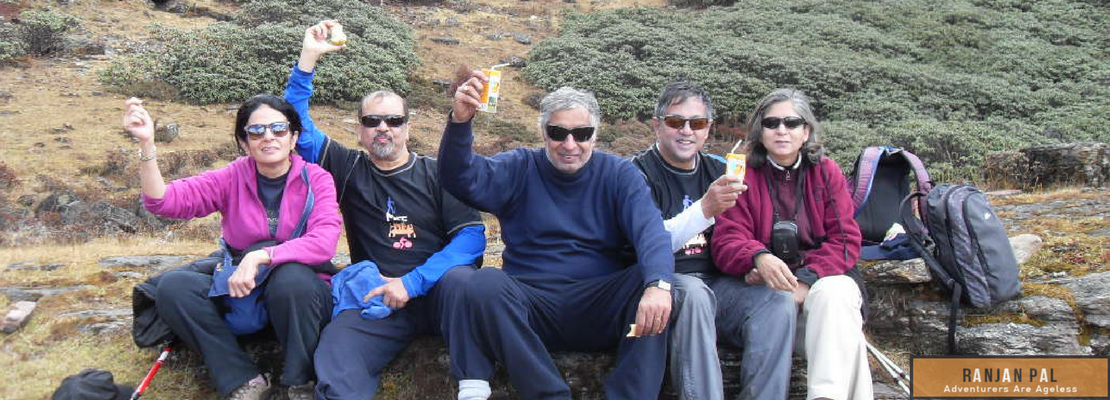
“We are the Pilgrims, master; we shall go
Always a little further: it may be
Beyond the last blue mountain barred with snow,
Across that angry or that glimmering sea”
~ James Elroy Flecker
Bhutan, the tiny Himalayan kingdom tucked away on the spine of the Himalayas, has always seemed like a fascinating place to go. It combines an ancient and rich Buddhist culture set among the highest unclimbed mountains in the world. Besides it is easily accessible from Delhi and we Indians are thankfully exempt from the high $200/day barrier that keeps the casual international traveller away.
So this year my BFF and trekking buddy Praveen and I began to look around for a trekking route in Bhutan that would meet certain special requirements. Firstly it could not be too demanding so that our spouses could handle it easily since they had agreed to come and be part of the adventure. Secondly it had to be relatively short so as to allow us time for the cultural part of our journey. The Drukpath (Druk translates as thunder dragon) trek seemed ideal from both points of view. In addition it offered the unique advantage of starting us off in Paro and ending up in Thimphu, both key cultural destinations. Finally the opportunity to see two beautiful alpine mountain lakes Jimilangsho and Simkotrasho was irresistible to me since I had never come across these before on my previous treks in the Himalayas.
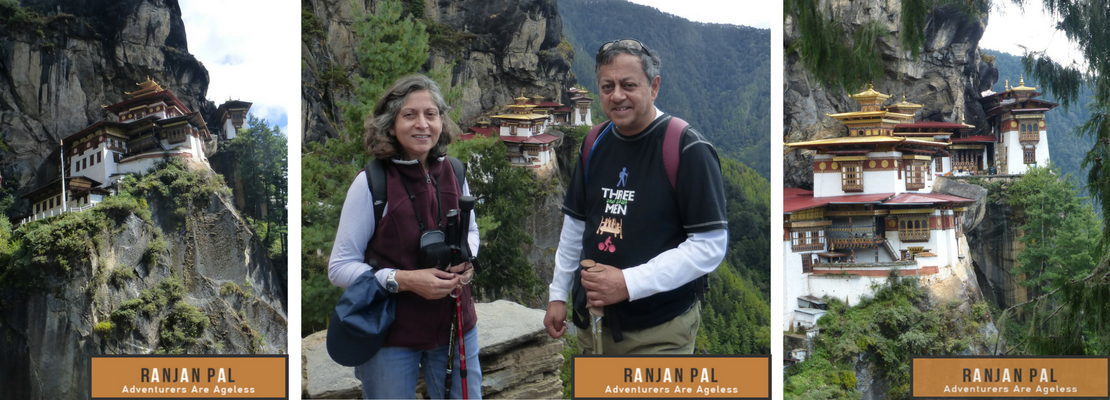
In mid-October we arrive in Paro and spent a day clambering up to the Taktsang (Tiger’s Nest) Monastery, literally a high point of anyone’s Bhutan itinerary. Perched on a sheer rock cliff, 2700 feet off the valley floor, Taktsang is a breathtaking sight and legend has it that Guru Rinpoche flew here on the back of one of his consorts who was in the guise of a flying tigress sometime in the 7th century. We mere mortals are less fortunate having to rely on our two weary feet but it is good preparation for the Drukpath and I am glad to see that everyone does well to get to the top.
The next morning dawns bright and clear and we gather at our departure point by 9 am. We meet our ebullient young guide Chokhi Wangchuk for the first time and the sight of the pony train being loaded with our supplies under the close watch of two grizzled horsemen is a reassuring one. The trail winds gradually upwards through forests of blue pine and our first landmark is a lone mani wall in a clearing called Damche Gom. Two hours later we break through the forest cover and sight the lone sentinel of Jili Dzong. The small fortress is an impressive sight lit by the rays of the setting sun with a dominating view of the Paro valley below. The resident lama opens it up for us and we prostrate ourselves before the penetrating stare of the 4m tall gilded statue of the Buddha Sakyamuni invoking the deity’s blessings for a safe journey.

That night we camp in a clearing below the dzong and at night, lit up by four floodlights, it appears like a celestial spaceship hovering far above us. The next morning as we continue along the ridge we get superb views of Jomolhari, second highest mountain in Bhutan and the surrounding peaks. There are a few other trekkers along the route from Europe and Latin America and we joke and chat as we pass each other on the trail.
Towards the end of the day Ashwin and I forge ahead anxious to get to our campsite which is a big meadow called Jangchulakha where the nomads camp out with their animals. In doing so we lose sight of Chokhi and the rest of the group and when we arrive at our destination, the forward party of cooks and horsemen are nowhere to be seen. This is the most elemental of errors in the mountains, people losing contact with each other. We survive those anxious and tense moments and no serious damage is done as the group is reunited at a higher campsite. However the lesson is learnt and tomorrow we will have Sonam our lunch boy leading and Chokhi bringing up the rear keeping in line of sight at all times.
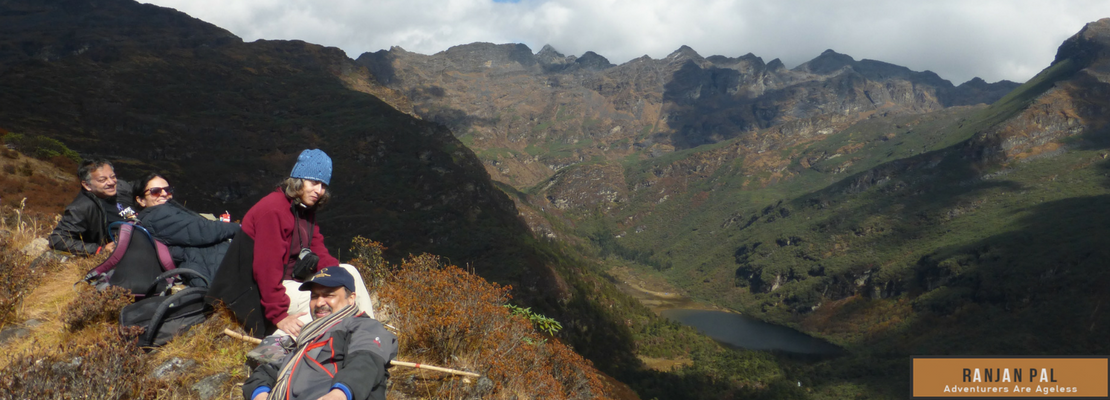
The next morning I struggle out of my tent to see the valleys below blanketed in an ocean of white cloud. It feels like we are in an aircraft flying high above; we are almost at 4000m and headed higher still. The group is moving in rhythm and we take our first break at the distinctively shaped Ox Hump. Far on the other side we can see the trail headed back up another high ridge towards Thimphu – it is the route that we will follow tomorrow. But today our destination is the pristine mountain lake called Jimilangsho and we soon catch sight of it nestled far below in a fold of the mountains glittering like an emerald in the sunlight.
Excitedly we scramble down the ridge, passing some startled yak on the way, and soon reach the shores of the lake. Near the bottom we pause at some ruins where the Buddhist monks used to meditate in splendid isolation. The lake translates as “Sand Ox Lake,” named after a legendary bull and within its clear depths we can see mountain trout swimming. That night we toast our having reached our halfway mark since the lake lies at the apex of the giant inverted “V” that forms the Drukpath trek.
Our path the next morning takes us round to the far side of the lake where we pause for a moment for the obligatory photos in front of the amazing panorama. We had debated taking a rest day in this idyllic spot but the horsemen are on a tight client schedule so we can’t make it happen. Reluctantly we climb out of the mountain cirque through the thick rhododendron forest but our spirits lift as soon as the sun reaches us. Soon another pretty little lake Janetsho comes into view and we take a short break before pushing for the top of the ridge.
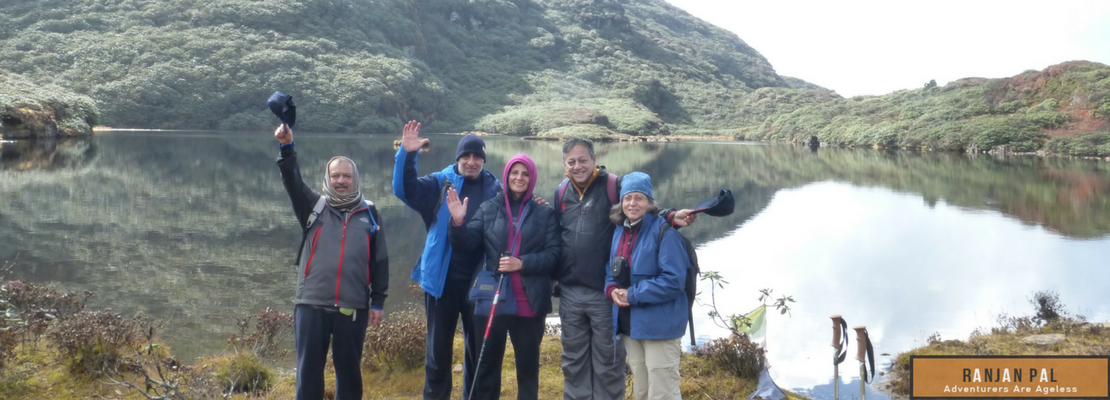
Far across the valley we can see the trail that we followed to get here including the bald patch of Jangchulaka among the thick conifer forests. We are now well on the downward leg of the giant “V” and rounding a bend our night halt of Simkotrasho comes into view. These Bhutanese mountain lakes are truly “hidden jewels” tucked away in a mountain fold and invisible until you come right upon them. It has been the best day of the trek so far and we enjoy the remaining hours of sunlight while a lone herdsmen rounds up his yaks and chases them up the mountain. At night the distant beacon of Jili Dzong is the only light visible on the far ridge and our isolation and the stillness is complete.
Clouds rise up from the valley below the next morning obscuring the sun. Undaunted we traipse down to the lake and say a prayer or two standing at the water’s edge. I would have loved to take a dip but it is too chilly and Chokhi thinks it would be blasphemy as the lake is supposed to have spiritual powers. I am reluctant to invoke the wrath of the Gods so we content ourselves with a few photos. The clouds are finally dispersing and after a delicious breakfast of Bhutanese pancakes and sausages, we hit the road again.
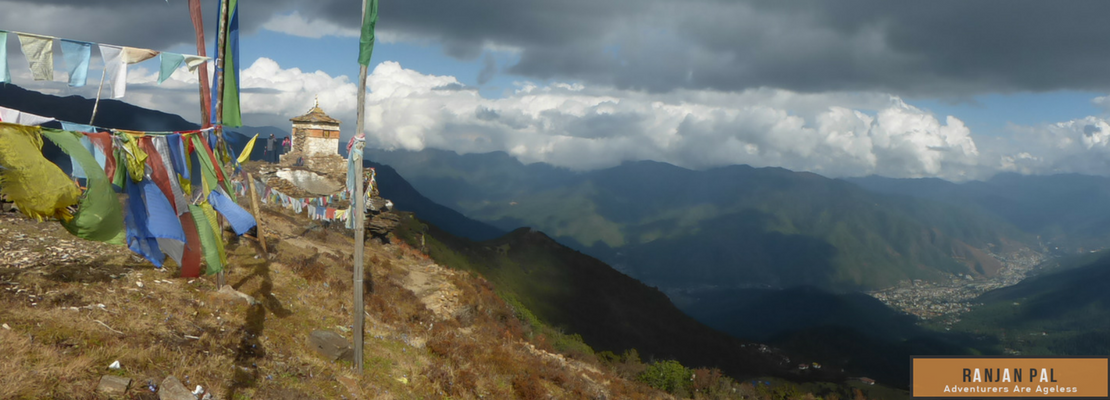
The trail now follows below the crest of the ridge with several ups-and-downs and we neither gain nor lose much in altitude. Unfortunately the weather does not co-operate so the spectacular view of the Bhutan Himalaya is hidden from view. Finally we spot a distant chorten on the ridge and below it lies the entire panorama of Thimphu, the nation’s capital and our journey’s end. It is obviously much bigger and more crowded than Paro and we can even spot our hotel on the banks of the Thimphu Chhu. The prospect of a hot bath to wash off almost a week’s accumulated grime is a compelling one!
We plunge down the steep slopes to the beckoning orange tents of our campsite at Phajoding to enjoy our last night on the trail. On the final morning an impromptu game of football ensues with some very young monks outside the Phajoding monastery. It is a gleeful and joyous interchange and Shuchi adds to the Gross National Happiness with a couple of goals that Chokhi fails to stop. The monklets keep chanting Guru Rinpoche at my BFF Praveen who bears a startling resemblance to the great sage (in his outward manifestation only) and we all dissolve in peals of laughter. Bhutan is infectious in its ability to please and the trip has surpassed all our expectations!
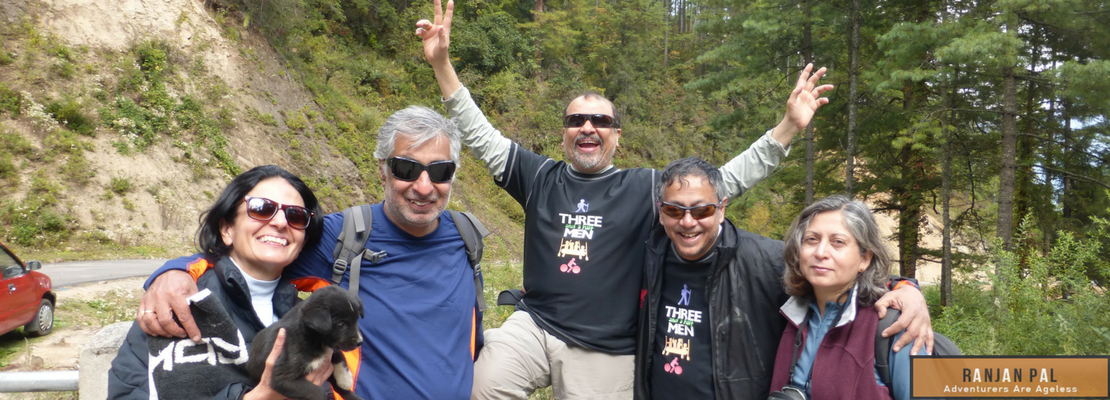
**This article has originally appeared in the Dec-Jan 2015/16 edition of Bhutan Airlines Inflight Magazine “Kuzuzangpo”. Check the PDF version here.
![]()

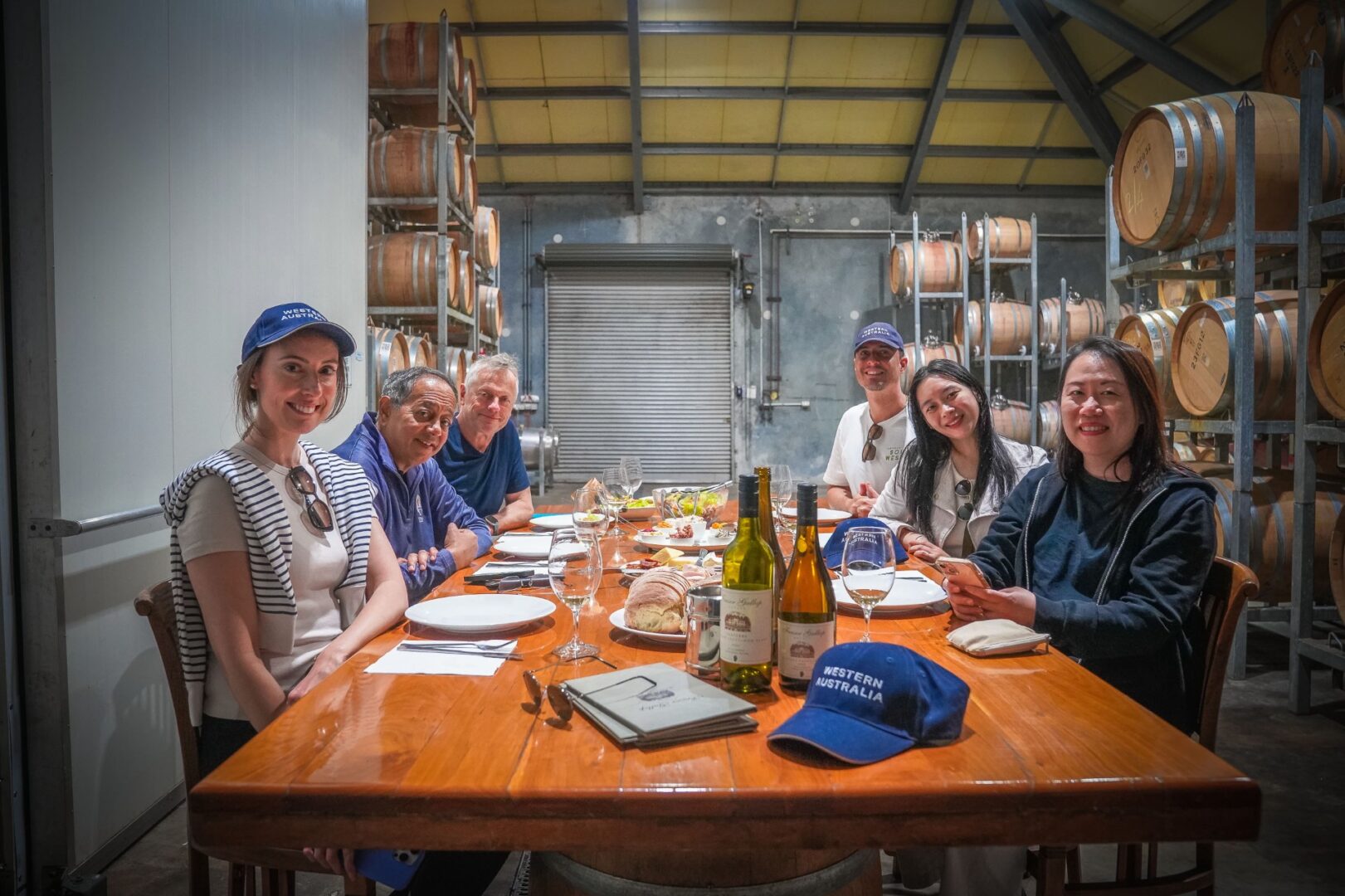
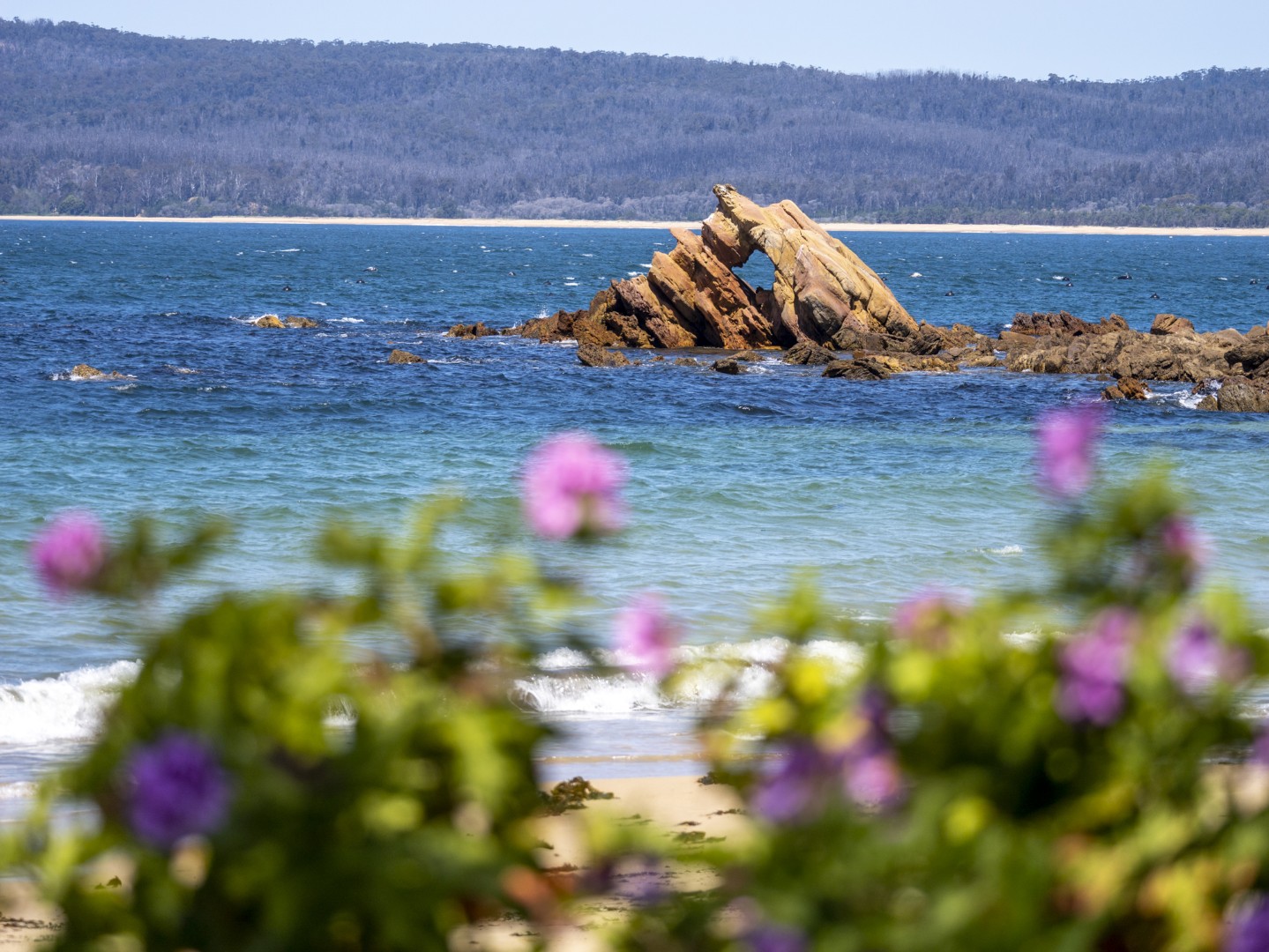
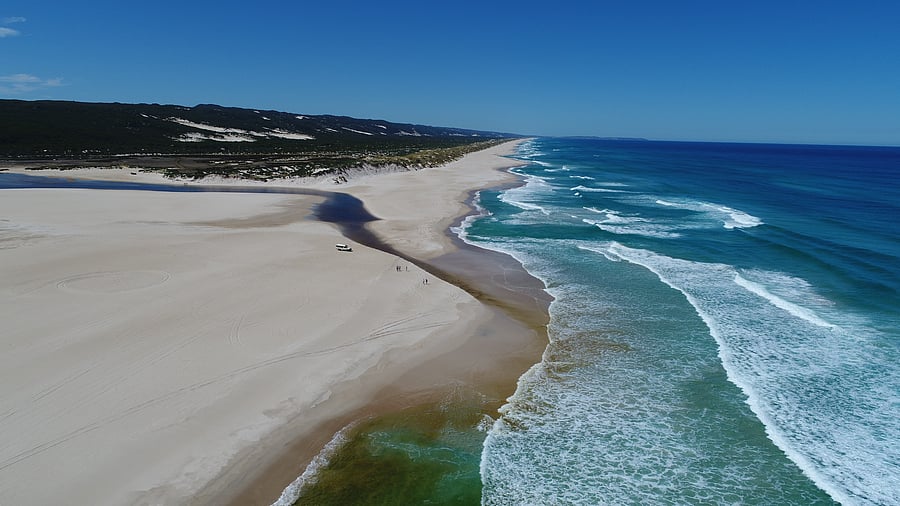
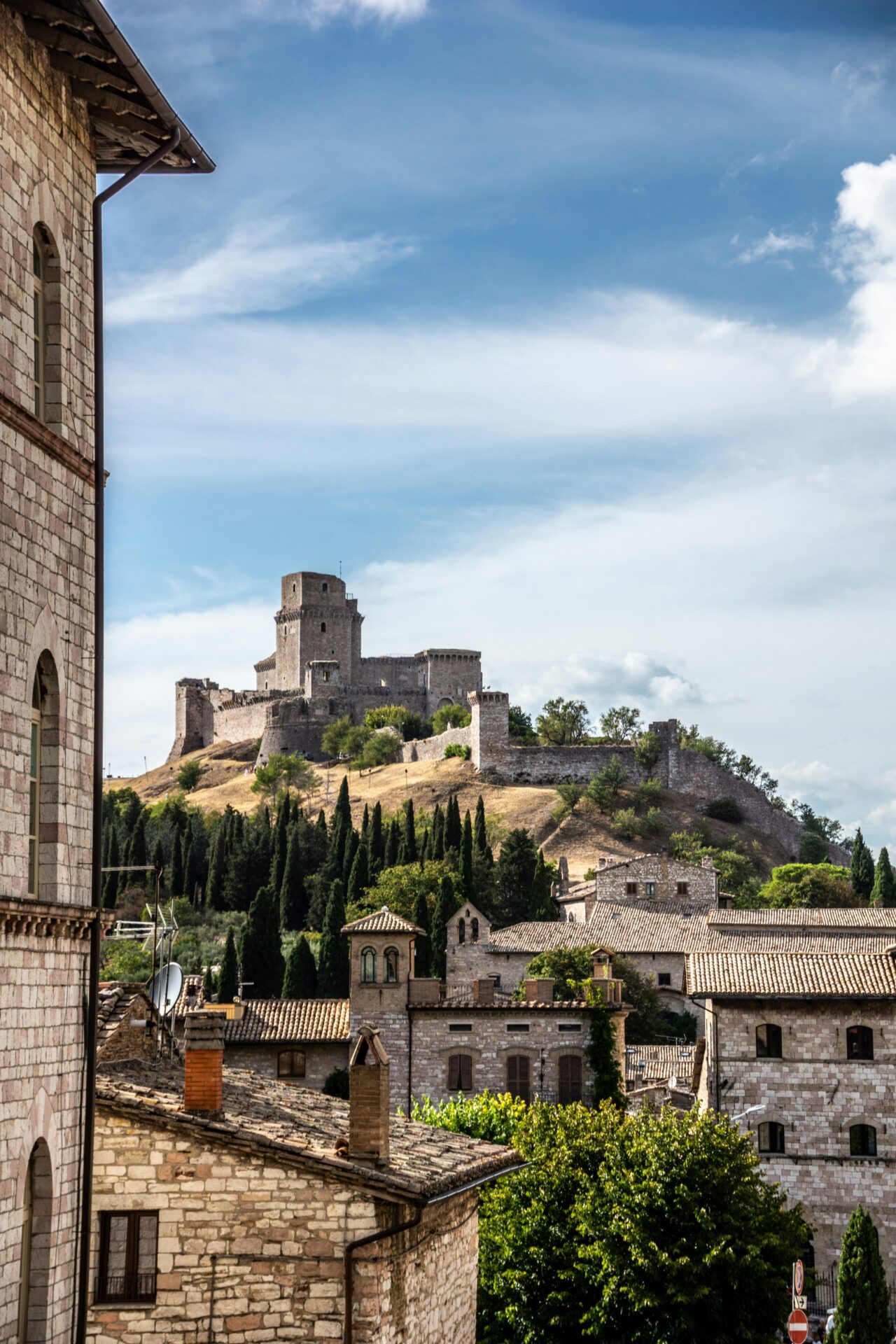

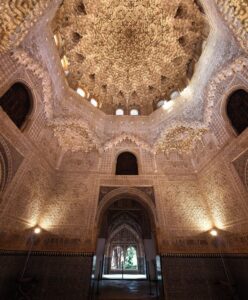
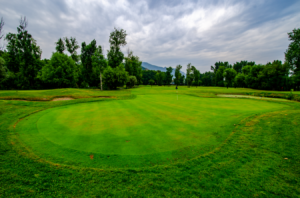
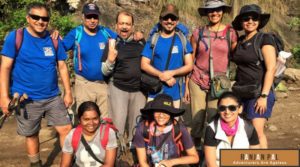
I’m impressed, I have to admit. Genuinely rarely should i encounter a weblog that’s both educative and entertaining, and let me tell you, you may have hit the nail about the head. Your idea is outstanding; the problem is an element that insufficient persons are speaking intelligently about. I am delighted we came across this during my look for something with this.
Thank you Osher, for your kind words. 🙂